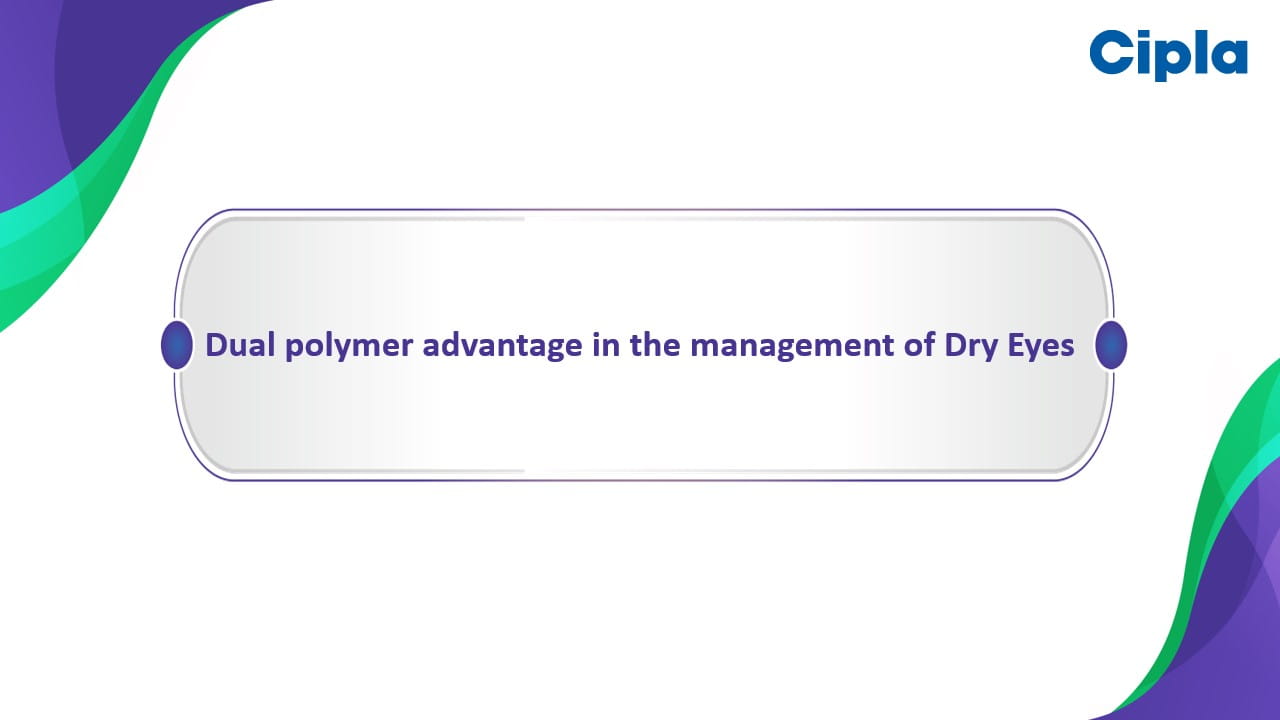Speaker: Michelle Hessen
Dry eye disease (DED) is a multifactorial ocular surface disorder characterized by inflammation and damage to the ocular surface. Previous studies have indicated that improvement in corneal fluorescein staining is often associated with enhanced visual acuity. Cyclosporine 0.09% ophthalmic emulsion and 0.05% cyclosporine ophthalmic emulsion are agents used to control inflammation and improve tear production in patients with DED. 0.09% cyclosporine ophthalmic emulsion is a nano-micellar solution containing polymers with hydrophilic and hydrophobic ends, creating a micelle-encapsulated drug that improves drug delivery and reduces ocular adverse reactions.
The objective of this Phase IV multicenter open-label study was to evaluate the effect of cyclosporine 0.09% on corneal fluorescein staining and best corrected visual acuity in patients inadequately controlled on 0.05% cyclosporine ophthalmic emulsion. Patients, who had been inadequately controlled after at least three months of 0.05% cyclosporine ophthalmic emulsion treatment, were assessed at baseline and subsequently at weeks 4, 8, and 12. Evaluations included total corneal fluorescein staining scores, best corrected visual acuity, and adverse reactions. Inclusion criteria required patients to be clinically diagnosed with dry eye for at least three months, with a total corneal fluorescein staining score of ≥6 or a score of ≥2 in any zone of one or both eyes, and a mean SANDE global symptom score of ≥40. Additionally, the best corrected visual acuity needed to be 20/200 or better in both eyes at screening.
The study included 124 patients, predominantly female, with an average age of 65.6 years (±11.54). The majority were not of Hispanic or Latino ethnicity. The baseline total corneal fluorescein staining score was 5.7 (±3.37), and baseline visual acuity in logMAR was 0.05 (±0.12). The cyclosporine 0.09% solution significantly reduced total corneal fluorescein staining scores at weeks 4, 8, and 12. Improvement in best corrected visual acuity was also noted at weeks 8 and 12. Cyclosporine 0.09% significantly reduced corneal fluorescein staining in both eyes at weeks 4, 8, and 12, regardless of baseline visual acuity. The treatment was generally well tolerated, with 84 adverse events reported, the majority of which were mild.
In conclusion, twice-daily cyclosporine 0.09% was associated with significant improvements in both corneal fluorescein staining scores and best corrected visual acuity by week 12. Significant reductions in corneal fluorescein staining were observed at week 12, irrespective of baseline visual acuity, and cyclosporine 0.09% was well tolerated throughout the study. These data support the efficacy and safety of cyclosporine 0.09% twice daily in improving dry eye symptoms and visual acuity in patients inadequately controlled with 0.05% cyclosporine ophthalmic emulsion.
The characterization of mesenchymal stem cells (MSCs) involved their retrieval from a provider in Copenhagen, where the cells were received frozen with 10% dimethyl sulfoxide (DMSO). The MSCs were used in the study at approximately the second passage. The transport involved freezing and thawing, with injections administered based on up to 50% of the lacrimal gland's volume, which varied among patients. Each vial contained MSCs from a single donor, with the number of cells injected differing per participant. Regarding the use of 0.09% cyclosporine ophthalmic emulsion in dry eye disease management, the dosing regimen of twice daily was chosen due to Food and Drug Administration (FDA) approval, despite some practices using cyclosporine 0.1% once daily. The majority of patient complaints with 0.09% cyclosporine ophthalmic emulsion were related to ocular irritation, including burning and stinging, which were categorized as mild.
A total of 11 patients discontinued treatment, with reasons including severe dry eye symptoms and irregular heartbeat, though the latter was not linked to the drug. The study demonstrated significant improvement in corneal fluorescein staining scores and best corrected visual acuity with 0.09% cyclosporine ophthalmic emulsion, and the M-SANDY scores were notably improved compared to cyclosporine 0.05%.
42nd Congress of the European Society of Cataract and Refractive Surgeons, 6 – 10 September 2024, Fira de Barcelona, Spain.




